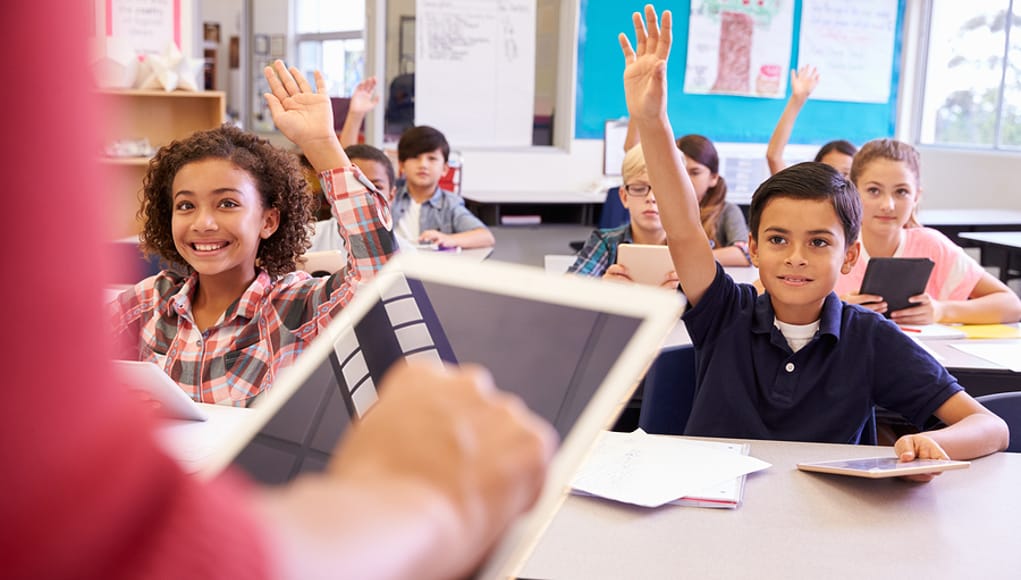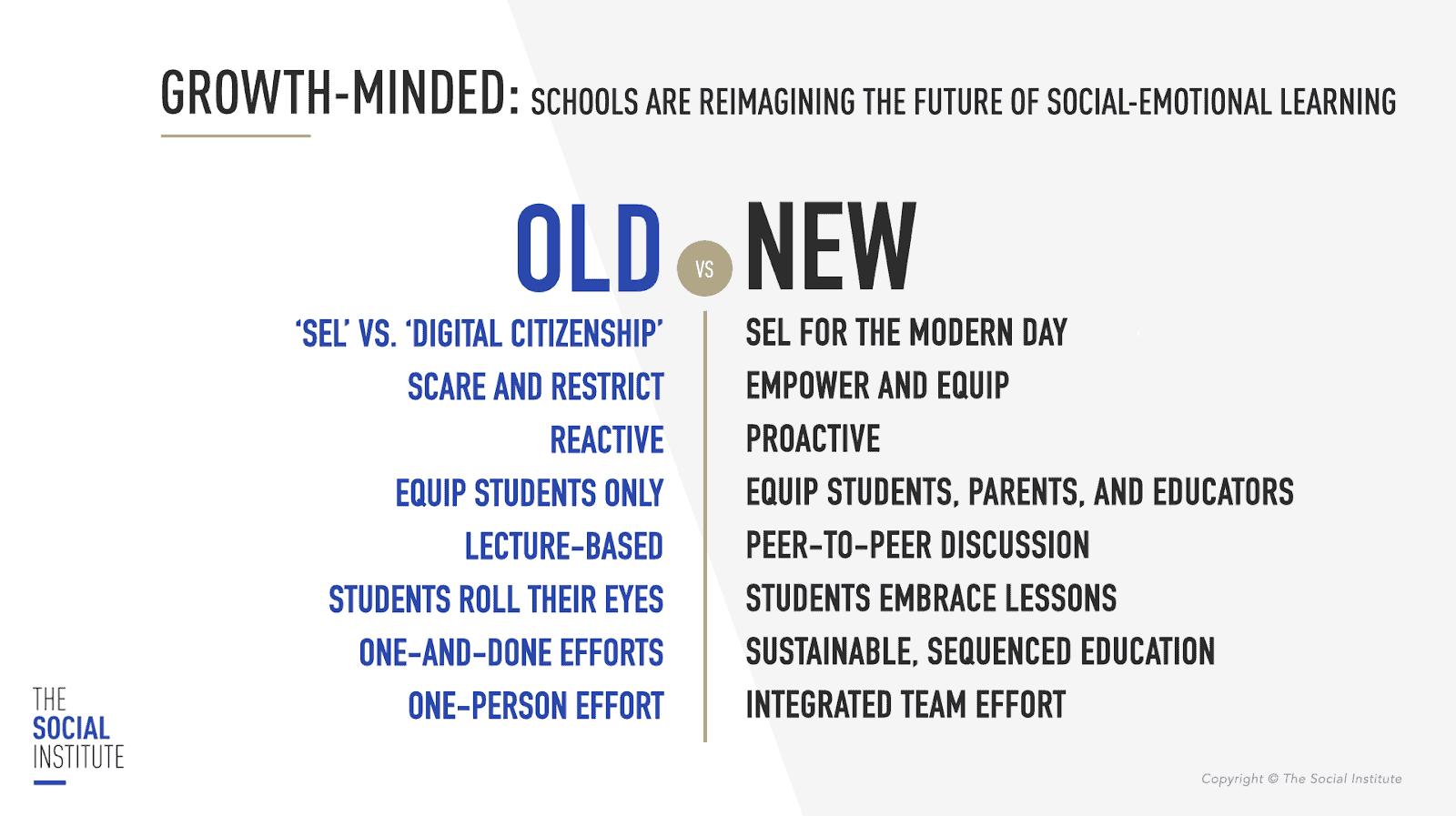The New Role of School Tech Leaders in Social-Emotional Health

By: Laura Tierney
Students today are more connected than ever. Since the pandemic began, more schools are adopting 1:1 device programs and embracing new technology platforms. Students as young as second grade are now using laptops and submitting work digitally, and according to an Axios report, children ages six through twelve say they are spending at least 50 percent more time in front of screens than they did before the pandemic.
As tech use evolves in schools, so must the role of tech leaders, who now must not simply provide devices and instruct how to use them, but also understand the impact of technology on student learning and wellbeing.
SEL VS. Digital Citizenship
Social-Emotional Learning (SEL) and Digital Citizenship are two areas that are being prioritized by many schools around the country and for good reason. But currently, most schools put SEL in one bucket, and digital citizenship in another bucket — keeping the two separate. Furthermore, SEL is often an in-person, interactive lesson led by a counselor, while digital citizenship is usually led by school technology leaders, typically after they distribute devices.
That approach has certainly made sense in the past. But as technology continues to play a more critical role in the social-emotional lives of students, a better approach is to lock arms as a school community and implement an integrated effort that encompasses social media and technology use. So, how can a school do that? Here are three best practices used by innovative schools across the country to transform digital citizenship — an outdated term that makes students roll their eyes — into modern-day SEL.

1. Adopt a Cross-Departmental, Team Effort
Student wellbeing is not limited to health class or advisory. Successful schools are finding ways to integrate SEL throughout the school day and to do that they are implementing school-wide programs. From librarians to counselors to tech leaders — students and the entire school community benefit from an integrated team effort. School leaders can support school-wide program implementation by announcing their priorities to their staff and proactively showing faculty the importance of this work.
At McDougle Middle School in Chapel, N.C., technology leader John Cowan worked alongside the school counselor as well as the librarian to implement SEL and social media education during daily advisory lessons. “We have an advisory class at the beginning of each day that provides a dedicated time for integrating learning in SEL and Digital Citizenship, said Cowan. “We use resources from The Social Institute as well as lessons created in-house when there are specific topics or issues we are seeing within our school or district that we want to address.”
2. Take a Proactive Approach to SEL and Social Media Education
When The Pegasus School in Huntington Beach, CA began providing students with 1:1 devices, they also ensured students were getting educated on how to positively navigate these devices — from learning how to “Protect their Privacy Like they’re Famous” to strategies to “Cyberback” a friend who is being Cyberbullied. “SEL has always been at the core of our school’s programming, said Corinne Yeager, Technology Coach at Pegasus. “When we went 1:1, first at the middle school level and then school-wide during the pandemic, we knew that we would need to continue to incorporate SEL to help students navigate these digital spaces as well.”
Yeager compares modern-day SEL to driver’s ed. “When we give students a device, we give them access to the world — for better or worse,” she said. Students aren’t handed car keys without driver’s ed, and they shouldn’t be handed a device without learning the ins and outs, the pros and cons, and what steps they can take to maximize their safety and well-being. We proactively address these issues early and often, in the hopes of not having to reactively address them as frequently as we perhaps would have without this training.”
It’s a smart approach because we know that proactively investing in SEL pays off. According to research from Columbia University, schools receive an 11 to 1 return for every dollar invested in SEL programming through savings on costs not incurred for intervention.
Further, The Collaborative for Academic, Social, and Emotional Learning (CASEL) found that “students participating in SEL programs also showed improved classroom behavior, an increased ability to manage stress and depression, and better attitudes about themselves, others, and school.”
Cowan also says an ongoing and consistent approach is key. “Our advisory classes give students the opportunity to have open discussions with trusted adults and their classmates that support social media education as well as other topics that our students may want time to talk about,” he explained. “It’s a safe space where students can start discussions based on things that impact them. Since the students have the same advisory teacher throughout their time at McDougle, they develop a trust that helps them feel more comfortable discussing issues that are important to them.”
3. Recognize You’re Not the Only Tech Expert
When it comes to social media and technology, it’s important to acknowledge that students are — and will always be — several steps ahead of adults. Most school tech leaders can relate to that feeling of playing whack-a-mole when it comes to keeping up — like setting up a firewall, only to have students bypass it using a VPN.
It’s a lot of pressure for an administrator to be at the cutting edge of technology while teaching a lesson to a room full of digital natives. The fastest way to get students to tune out is to use the wrong lingo or reference dated apps. That’s why it’s so important to have student voices fueling your efforts in modern-day SEL. When students are empowered to contribute to lessons in meaningful ways, they are more engaged, more open to sharing their thoughts, and more willing to consider other viewpoints. They also thrive when they are put in a position to “coach up” and share positive best practices and inspiring ideas with the adults in their lives.
Finally, prioritizing student voices in SEL presents an opportunity for teachers to ask important questions and actively listen in order to understand the most pressing challenges being faced by today’s students.
With technology now woven into the fabric of student’s daily lives, the role of school technology leaders has never been more important. Beyond handing out devices and troubleshooting tech issues, school tech leaders now have the ability – and frankly the responsibility – to empower students to use technology and social media to fuel their health, happiness, and future success.
For more, see:
- Why SEL is More Important Than Ever Meeting SEL Needs Virtually
- Why Every K-12 District Should Invest in Social-Emotional Learning
- Data-Driven SEL: How it Can Meet Your Students Needs
Laura Tierney is Founder and CEO of The Social Institute, which empowers students to navigate social-emotional health, social media, and technology positively. Follow her on Twitter at @SoLaur and learn more at TheSocialInstitute.com.
Stay in-the-know with innovations in learning by signing up for the weekly Smart Update.





0 Comments
Leave a Comment
Your email address will not be published. All fields are required.